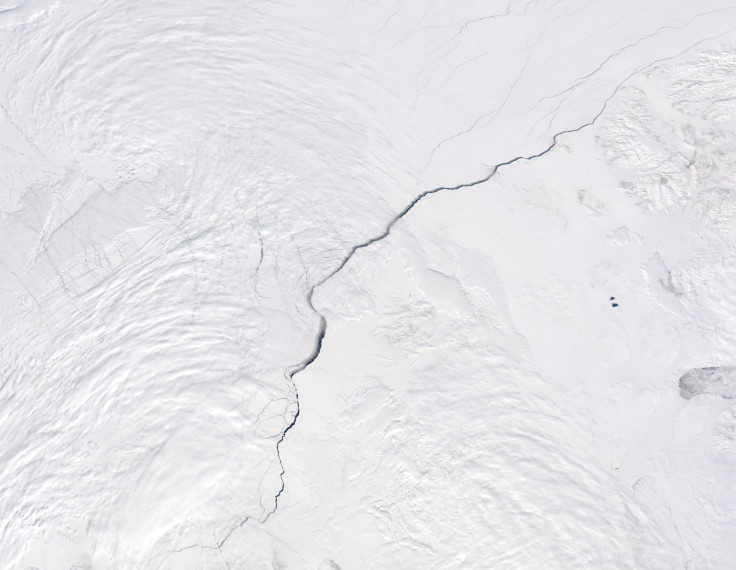The North Pole is at melting point now, when it's normally -20°C at this time of year
Warmer oceans and winds plus higher temperatures combine to begin a 'vicious circle' of warming in the Arctic.

Warm oceans, northward winds and "freakishly high" temperatures in the Arctic are coming together to warm up the Arctic even more, climate scientists have said.
Air temperatures over the Arctic sea ice are 9-12°C higher than normal, according to data released by the Danish Meteorological Institute (DMI). For several days last week the temperatures above the North Pole reached melting point at 0°C. At this time of year temperatures above the Pole are usually -20°C, says researcher Martin Stendel of DMI.
"This is by far the highest recorded," Stendel says. "What we are observing is very unusual."
Warmth is brought to the Pole by winds from western Europe and from the west of Africa – while a strong El Niño effect earlier in the year compounded the problem.
"The winds carrying this heat is a temporary –and fairly unprecedented – weather phenomenon," says Valerie Masson Delmotte of the Climate and Environment Sciences Laboratory in France.
Less ice now means even less ice in the future
These weather events are worsened by a background of rising temperatures. "The long-term decline in sea ice in the Arctic can be attributed to climate change," says Ed Blockley of the Met Office's Polar Climate Group.
The lack of ice formation in the Arctic is leading to further warming temperatures, as the majority of the Sun's rays are not reflected back into the atmosphere by the bright white snow and ice. Instead they're absorbed by the ocean, warming it up.
"If you look at the extent of sea ice, then you can see the vicious circle right away, because there's a clear downward trend," said Stendel.

The loss of ice "amplifies global warming in general, and increases warming especially in nearby continents", says Delmotte.
At this time of year the Arctic is usually beginning to freeze over for the winter, with thousands of square kilometres of ice forming every day. This is not happening anywhere near as quickly this year.
"Not only was the ice not growing as it would normally, there was further melting due to warm air coming in," Stendel says.
The US National Snow and Ice Data Center reported that sea ice extent in October was the lowest on record, some 6.4 million square kilometres (2.5 million square miles).
© Copyright IBTimes 2024. All rights reserved.






